Argentine American architect César Pelli has designed some of the world’s tallest buildings and other major urban landmarks. Among his most famous contributions there are the Petronas Towers in Kuala Lumpur and the World Financial Center in New York City.

Image source: https://en.wikipedia.org/wiki/C%C3%A9sar_Pelli#/media/File:C%C3%A9sar_Pelli_(cropped).jpg
What do we know about him?
He was born in 1926 in Tucumán, Argentina. At the age of sixteen, when he was to adopt a career, he went for architecture without knowing much about it but ended up loving it from the core of his heart. After earning a bachelor’s degree in architecture at the National University of Tucumán, Pelli moved to the United States to get his master’s degree from the University of Illinois at Urbana-Champaign in 1954. He began his professional career with the firm of Eero Saarinen and Associates in Bloomfield Hills. From mid 1960’s, he worked in association with different firms and learned a huge deal about technology relating glass skins, producing buildings with lightweight and translucent quality.
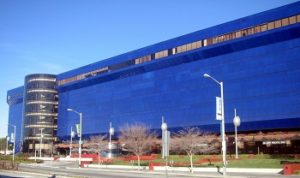
Image source: https://en.wikipedia.org/wiki/C%C3%A9sar_Pelli#/media/File:PacificDesignCenter03.jpg
From 1977 to 1984, he served as dean of the School of Architecture at Yale University and in 1977, he established his own practice, “Cesar Pelli and Associates” (now Pelli Clarke Pelli) in New Haven, Connecticut. During this period, the taut style of his early work evolved into stone-clad buildings of greater sculptural quality. By the mid-1990s, Pelli was famous all over the world for the lightweight appearance of his buildings, which were often surfaced in glass or a thin stone veneer. At the turn of the 21st century, Pelli continued his decades-long career with a commission to design the Connecticut Science Center in Hartford. It was completed in June 2009.
Info source: http://www.famous-architects.org/cesar-pelli/
“My projects are like my children, so I cannot have a favorite!”
- Petronas Towers
They are the World’s Tallest Twin Towers. They form the central element of the Kuala Lumpur City Centre, Malaysia and are known all over the world for their signature iconic standard in skyscraper history. The Argentine architect took inspiration from Islamic culture, from the climate and light of Kuala Lumpur, from Maltese craftsmanship and design. The plan of the towers is generated by two overlapping squares that form an octagonal star, a typical model in Islamic design. The towers are clad in glass and stainless steel panels that gently reflect the sunlight, typical of any soaring tower and have a high strength reinforced concrete structure, a material familiar to Asian contractors and twice as effective as steel in the reduction of the oscillation.
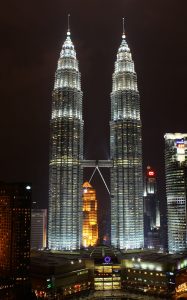
Image source: https://en.wikipedia.org/wiki/C%C3%A9sar_Pelli#/media/File:Petronas_Towers,_Kuala_Lumpur_(3323152170).jpg
In order to take advantages of the high angle of the Malaysian sun, there are shading devices into each façade. In addition, laminated glass was used to reflect radiation away from the interior and minimize heat gain, thus reducing the use of air conditioning. Between the two towers there is a powerful and figurative emptiness. To activate this space, a two-story bridge has been added, structured by angular brackets that shape the space and accentuate the vertical thrust of the towers. it also acts as a safety device, so that in the event of a fire or other emergency in a tower, the tenants can be evacuated to the other tower.
Info source: https://www.archute.com/2016/01/28/petronas-towers-worlds-tallest-twin-towers-cesar-pelli/
- World Financial Center (Brookfield Place), NYC
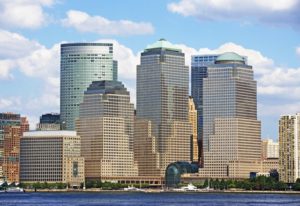
Image source: https://en.wikipedia.org/wiki/Brookfield_Place_(New_York_City)#/media/File:World_Financial_Center_NY_2011.jpg
The World Financial Center (now officially known as Brookfield Place) was built between 1985 and 1988 and it is situated in Battery Park City, NYC. It is a complex of four postmodern buildings which are considered post-Modernist because they combine new ideas with traditional forms. The polished granite-and-glass towers are each topped with a specific geometrically-shaped crown, which are said to identify the owners of the buildings.The lobbies are fashioned from shiny black marble and feature tall columns. The 4 postmodern buildings are the following:
- One World Financial Center (176m) boasts more than 1.5 million square feet of leasable office space. This southernmost tower is connected to the rest of the complex through a pedestrian bridge that crosses over Liberty Street.
- Two World Financial Center (197m) is the second tallest of the buildings in the WFC. The building has 2.5 million square feet housing companies such as Commerzbank and Deloitte.
- Three World Financial Center is the tallest of all the buildings (225m) and it is mainly occupied by American Express.
- In contrast, Four World Financial Center is the smallest one (152m). It is entirely occupied by Merrill Lynch and serves as its world headquarters.
Info source: http://www.aviewoncities.com/nyc/worldfinancialcenter.htm
The best-known feature of the World Financial Center is the winter garden, a glass cupola supported by a steel skeleton. It is planted with palm trees and contains cafes, shops and a succession of marble steps, which serve as the backdrop for concerts and other performances.
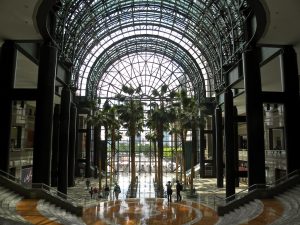
Image source: https://search.creativecommons.org/photos/4aa6480d-62cd-4043-9af5-fab725b553b3
What characterizes his style?
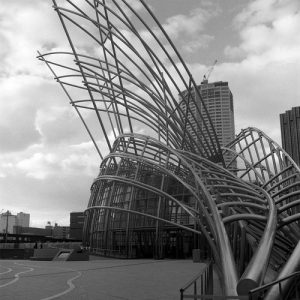
Image source: https://search.creativecommons.org/photos/6bcbd82f-4cbc-44da-9eb3-7d0391f83166 by ..colb..
César Pelli’s work is appreciated for being “poetic” and “fresh” in nature. He has always managed to be among the favorites of critics. One of the frequently noted characters in his buildings is the diversity displayed in all of his works. Pelli’s designs are known for their scale and sensitivity to the surrounding landscape, and include urban landmarks. One of the most inspiring things about César Pelli is his charm. The Argentine architect and former dean of Yale’s School of Architecture is the definition of longevity. He always takes the good with the bad. Unlike many architects whose style is easily recognizable, Pelli doesn’t have a hallmark aesthetic. He dwells in anonymity, designing buildings that fit in with their natural surroundings or the client’s wishes. His talent was spotted early on as a graduate student attending the University of Illinois at Urbana-Champaign. One of his professors recommended him to Eero Saarinen and Associates, where he ended up working on the famous TWA terminal at John F. Kennedy Airport. Once elder, Pelli said “I’ve been successful but not too much, which is probably better,” he says. “Fame is a very corroding thing, I can see it in a couple of friends of mine. You lose touch with reality and everything becomes possible and easy, and that’s not life.”

Image and info source: https://www.flickr.com/photos/45122874@N02/5167424700
